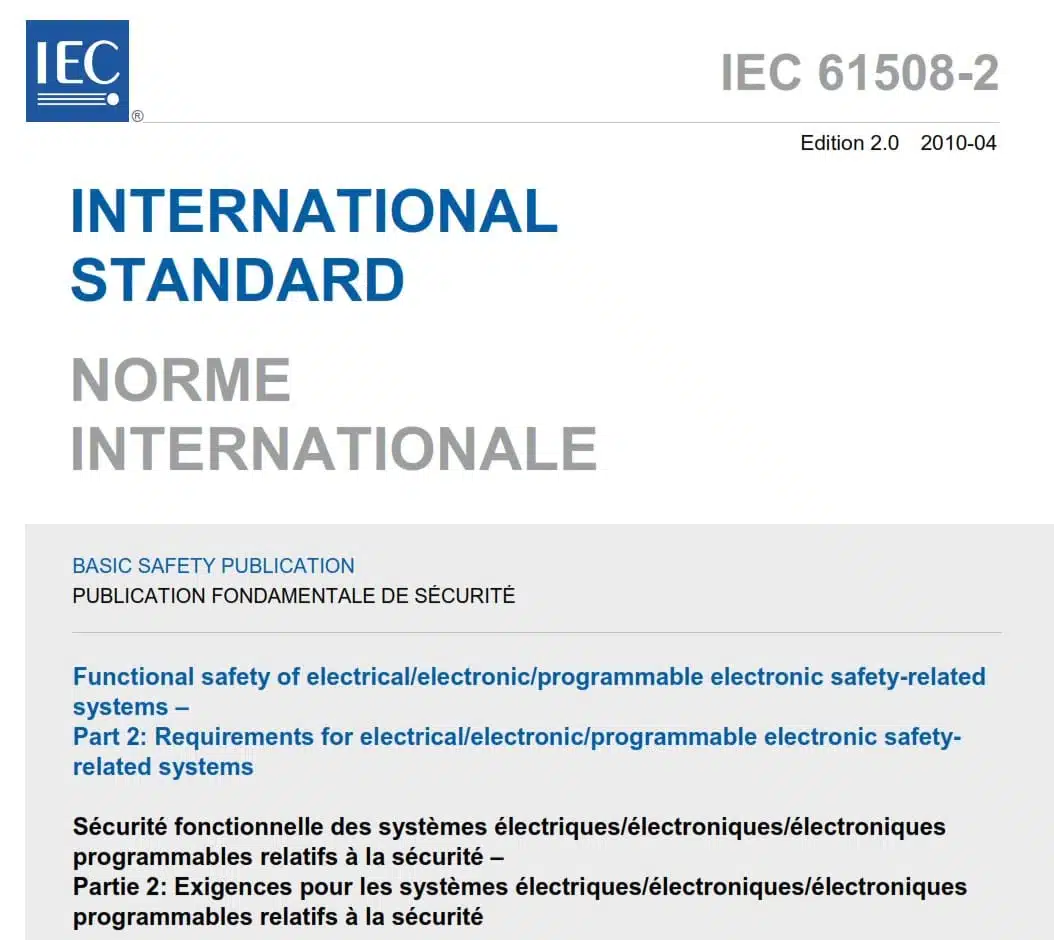Last edit: 26/06/2023

This is the “mother” of all Functional safety standards used in several industries worldwide. It was written in order to allow the use of Electronic components in safety critical systems.
In 1985, the International Electrotechnical Commission (IEC) set up a Task Group to assess the viability of developing a generic standard for programmable electronic systems to be used for safety applications. A working group had previously been set up to deal with safety-related software. These two working groups collaborated on the development of an international standard that became the IEC 61508 series, published at the end of the 90’s.
The original scope of the Task Group, programmable electronic systems used for safety applications, was extended to include all types of electro-technical based technologies, electrical, electronic and programmable electronic systems: the so called E/E/PE systems.
Parts 1 to 7 of IEC 61508 were published during the period 1998-2000. In 2005 IEC/TR 61508-0 was published. A review process to update and improve the standard was initiated in 2002 and it was completed with the publication of IEC 61508 Edition 2 in April 2010.
The overall title of IEC 61508 is ‘Functional Safety of electrical, electronic and programmable electronic (E/E/PE) safety-related systems’. It has eight parts.
- Part 0: Functional Safety and IEC 61508
- Part 1: General requirements
- Part 2: Requirements for electrical/electronic/programmable electronic safety-related systems
- Part 3: Software requirements
- Part 4: Definitions and abbreviations
- Part 5: Examples of methods for the determination of safety integrity levels
- Part 6: Guidelines on the application of parts 2 and 3
- Part 7: Overview of techniques and measures
Parts 1, 2 and 3 contain the normative requirements and some informative parts. Parts 0, 5, 6 and 7 do not contain any normative requirement. Parts 1, 2, 3 and 4 of IEC 61508 are IEC Basic Safety Publications (BSP). Those are, at the moment, the only BSP on Functional Safety.
IEC 61508 is used as the basis for sector and product standards. It has been used to develop standards for the process, nuclear and railway industries and for machinery and power drive systems. It has influenced, and it will continue to influence, the development of E/E/PE safety-related systems and products across several sectors.
Despite its title, EN 50156-1 is applicable to water heating systems, steam boiler installations and heat recovery steam boilers. Industrial furnaces and associated processing equipment (TPE) follow ISO 13849-1 and IEC 62061 for high demand mode applications and IEC 61511-1 for low demand mode safety systems.
The strategy for achieving Functional Safety is made up of the following key elements:
- Management of Functional Safety
- Technical requirements for relevant phases of the applicable safety lifecycle
- Functional Safety Assessment (FSA)
- Competence of persons.
The standard covers the whole safety life-cycle: from the initial concept until the system decommissioning or disposal. It proposes three complementary life-cycles:
- The overall Safety Lifecycle can be considered as the leading one. One of its phases, Realisation, is decomposed in two life-cycles which are executed in parallel:
- The E/E/PE system safety life-cycle, related to hardware and
- The Software safety life-cycle.